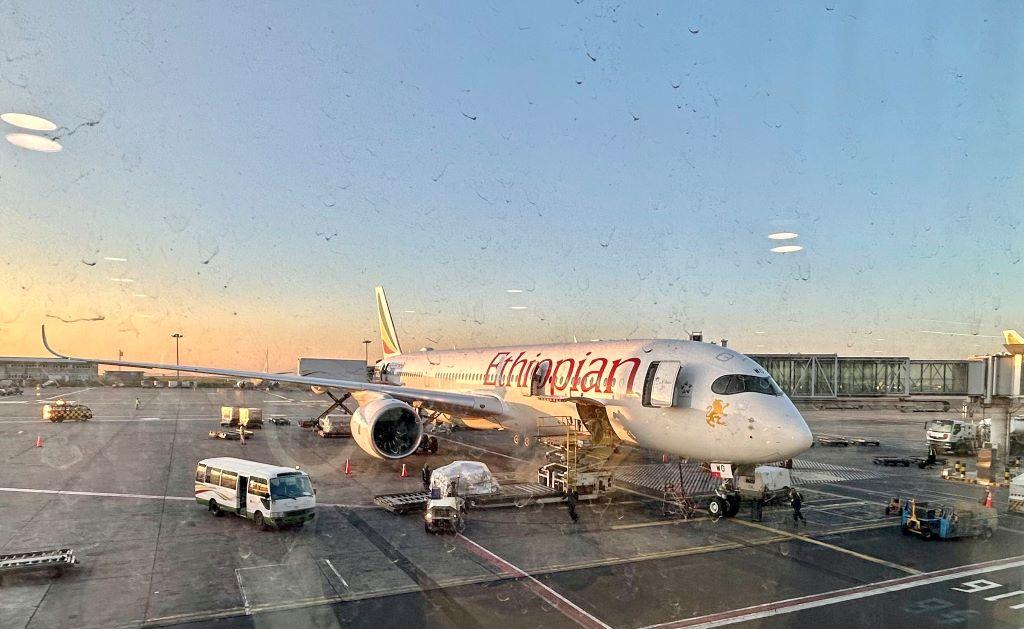
One of Ethiopian Airlines‘ 18 Airbus A350-900s on the stand at Addis Ababa Bole International Airport. The airline expected delivery of its 19th aircraft at the end of November.
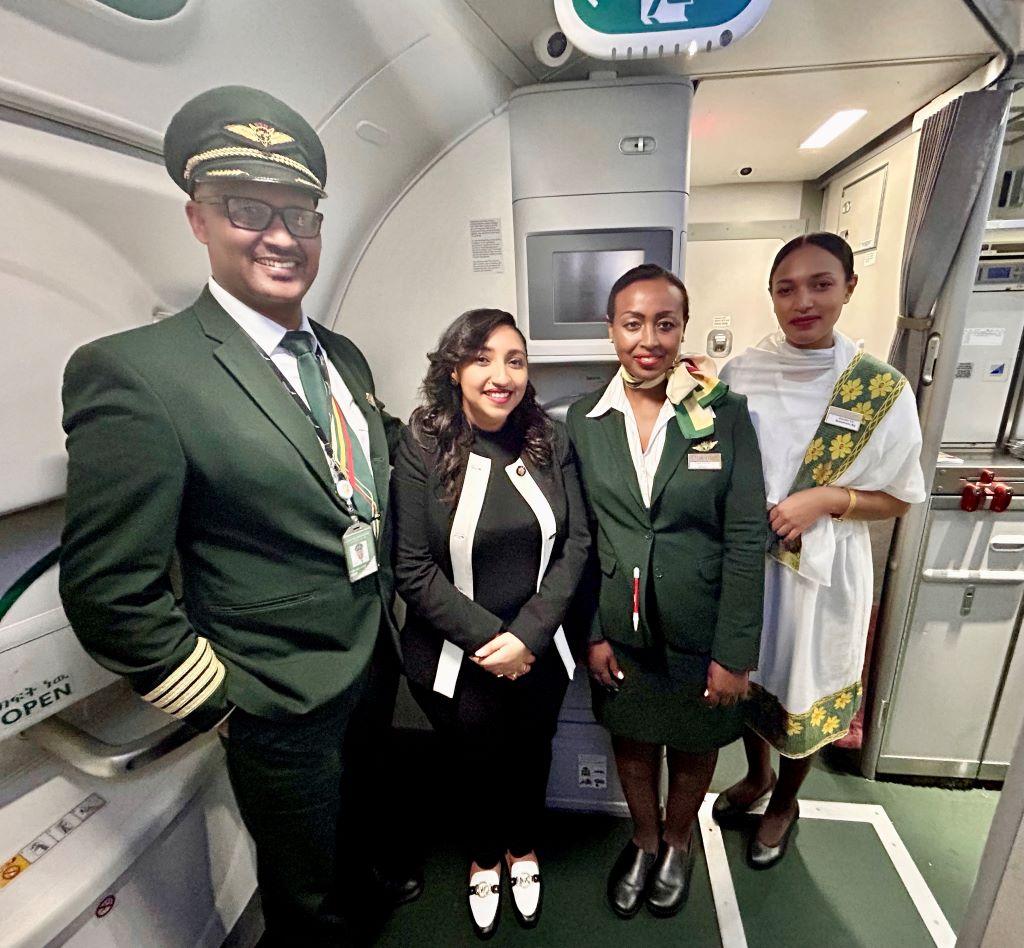
Ethiopian Airlines Regional Director Saba G. Kassaye for Austria & Eastern Europe (second from left) and the crew of a Boeing 787-9 welcome ATW on board in Vienna for a flight to Addis Ababa.

Ethiopian Airlines, which offers 30 seats in its Cloud Nine Business Class on its Boeing 787-9, lands in Addis after a flying time of five hours, 25 minutes.
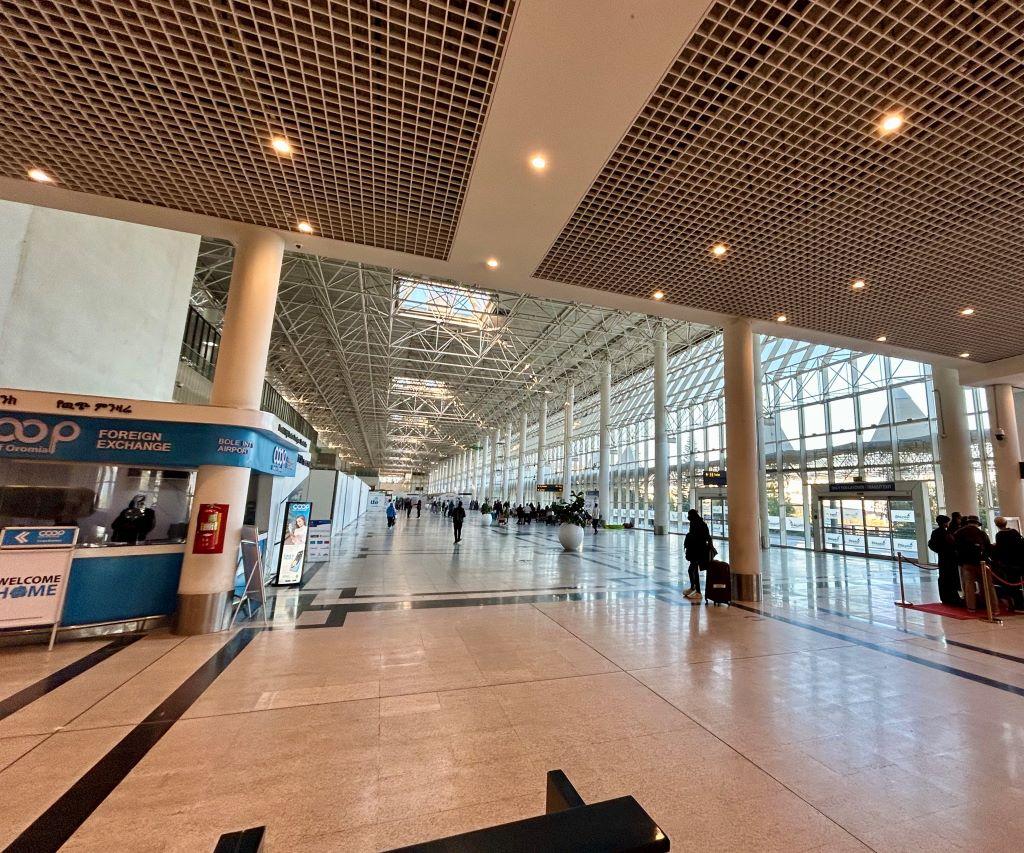
Addis Ababa Bole International Airport‘s Arrival Hall. The airport expanded terminal capacity in 2020 to handle increasing passenger flows.
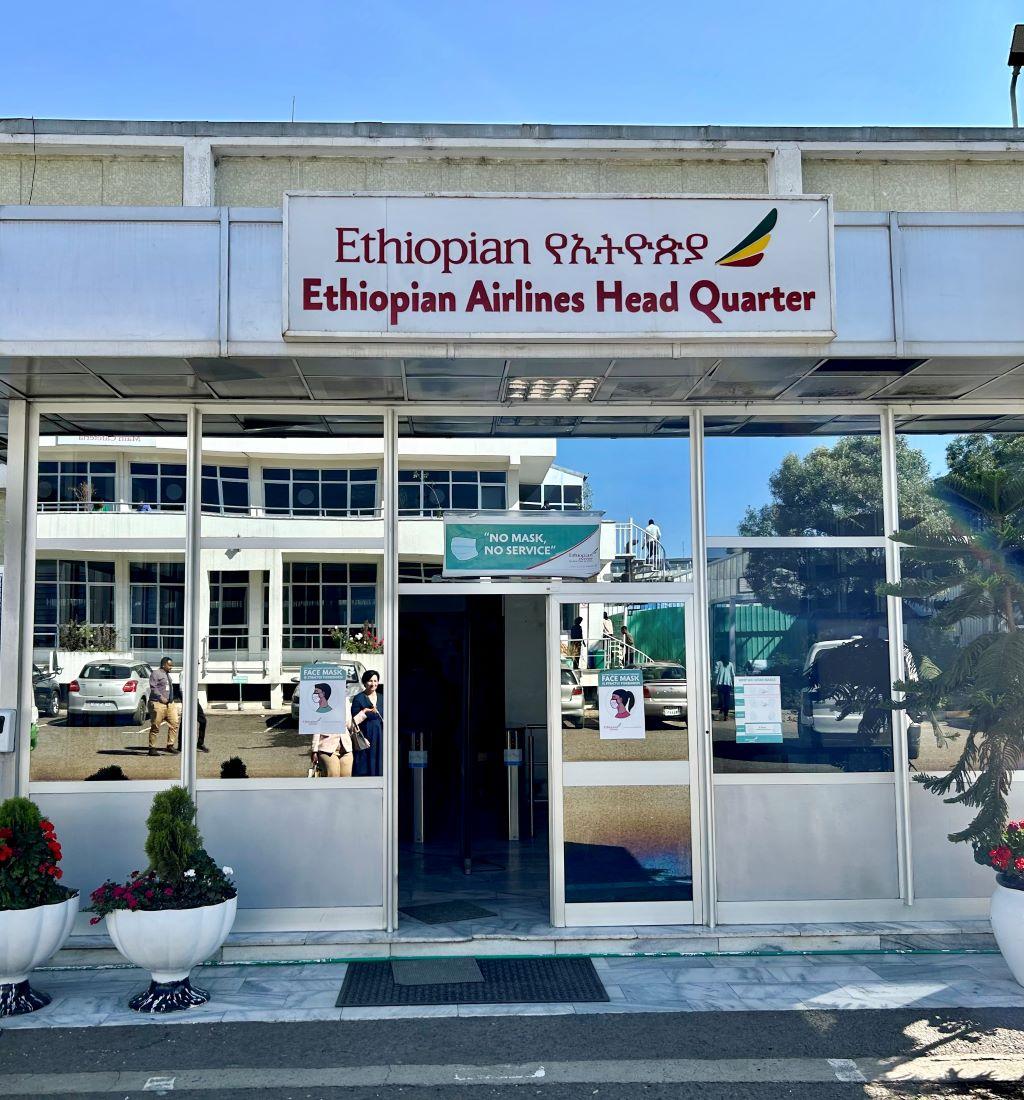
Entrance to the carrier‘s head office, which is still from the early 1960s. “We always preferred to buy first the newest aircraft instead building a new office,“ one employee told ATW. However, a new HQ is already on the plan.

Ethiopian Airlines Group CEO Mesfin Tasew gives an exclusive interview to ATW.

CEO Mesfin Tasew (center) and Chairman Board of Management Girma Wake (right), talks with ATW correspondent Kurt Hofmann.
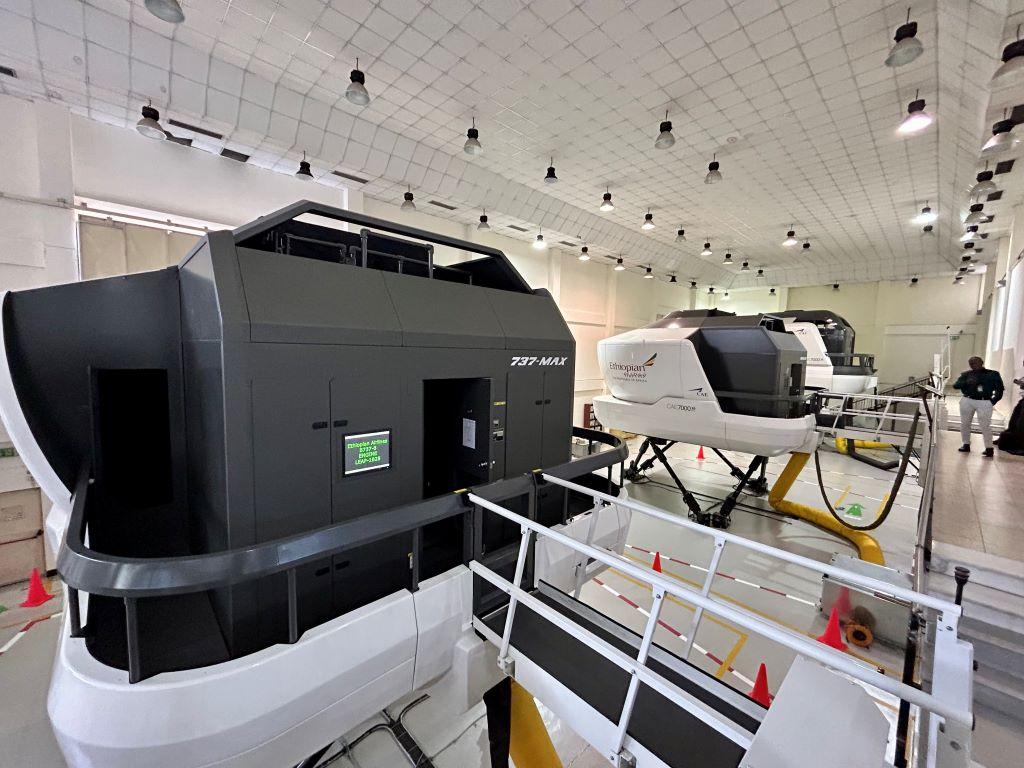
Inside Ethiopian Airlines' Flight Operations Center are eight full flight simulators, including an Airbus A350, Boeing 787, 777, 737NG, 737 MAX, 767 and two Dash 8Q400s. In the front is a 737 MAX simulator.
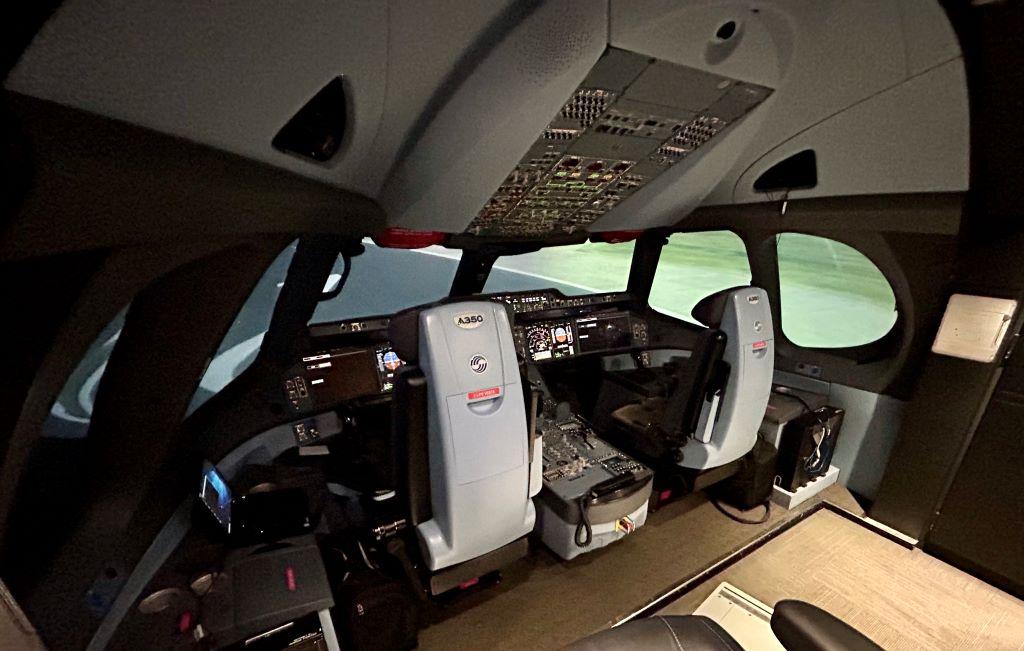
The cockpit of the Airbus A350 full flight simulator. Ethiopian Airlines was the first airline in Africa to operate this device.
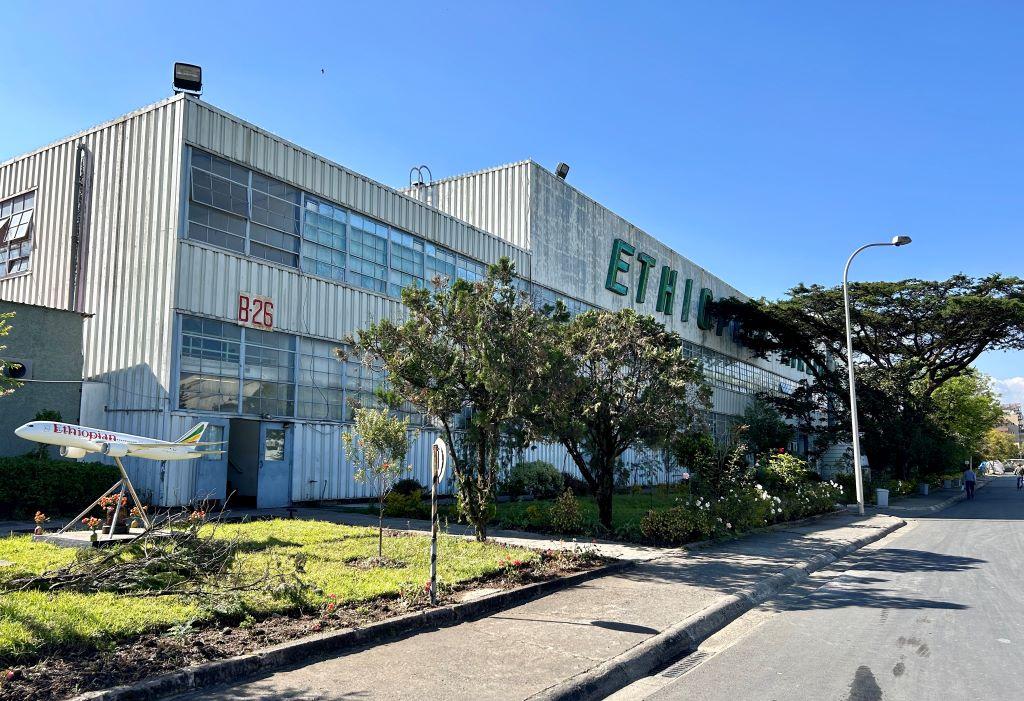
Throughout the huge facilities of Ethiopian Airlines, there are a combination of old and new buildings. Pictured, an old building at the carrier’s MRO site.
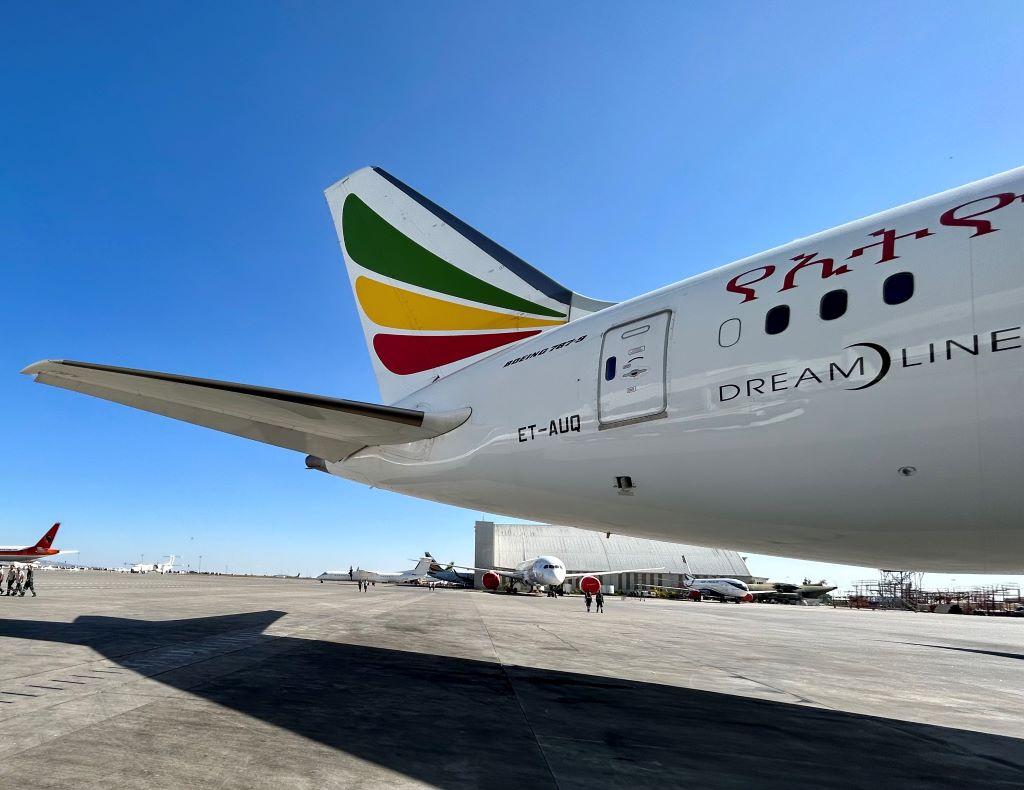
The tail of a Boeing 787-9 in front of its dedicated hangar. Currently, Ethiopian‘s MRO unit has a workforce of over 3,000 technicians and a facility certified by competent regulatory bodies such as the ETCAA, FAA ,EASA and other Middle East and African Civil Aviation authorities.
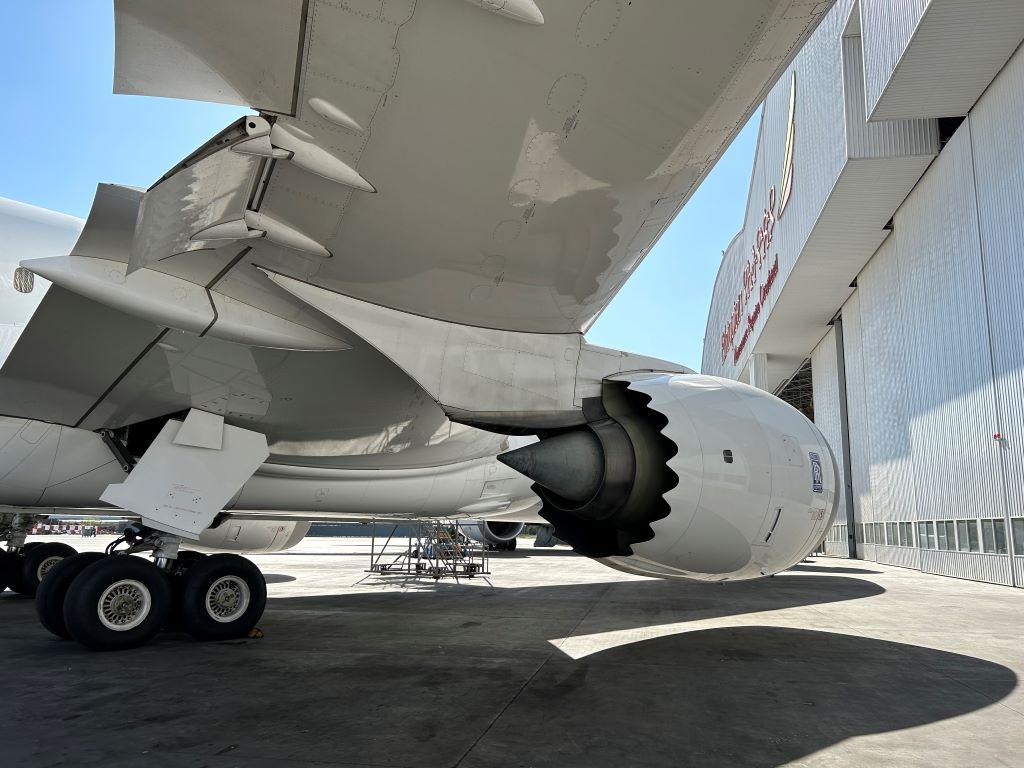
A detailed view of an Boeing 787-9 engine. Ethiopian operates the RR TRENT1000-K and GENX1B76A engine for its 787s.
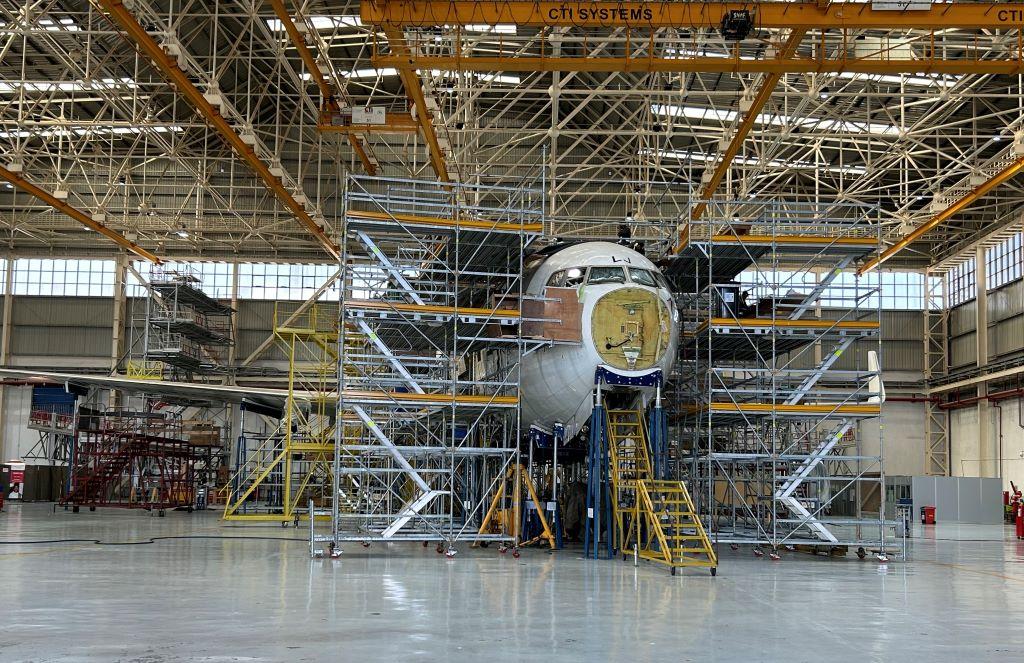
Ethiopian Airlines completed its first passenger-to-cargo conversion of a 767-300ER in October. This is the conversion of a second aircraft that is in progress, to be followed by a third. Over 100 technicians work in this 767 and 787 hangar.
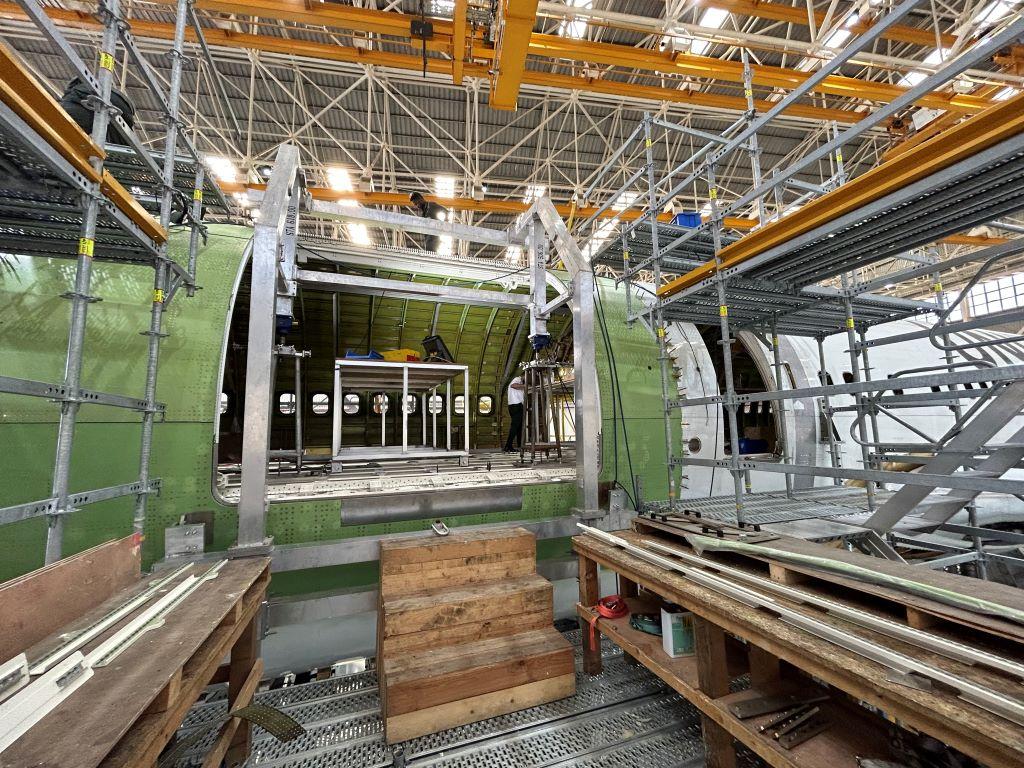
A detailed view of a 767 section where the fuselage was removed to install the cargo door. The carrier plans to convert some 777-200LRs into freighters.
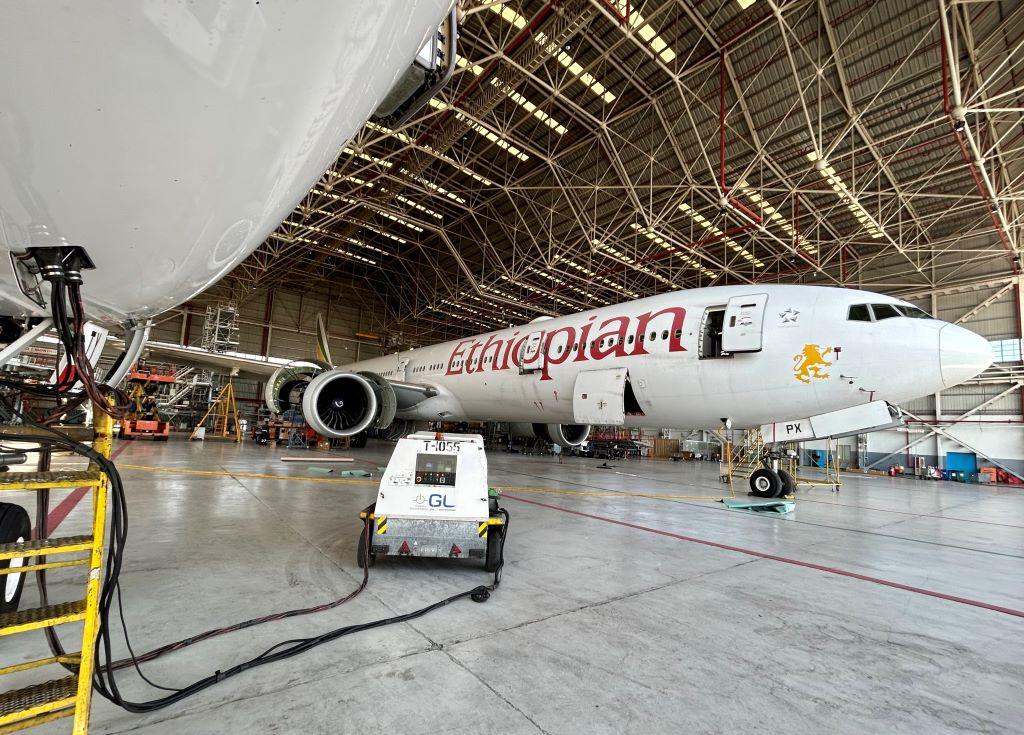
One of Ethiopian´s four Boeing 777-300ERs undergoes a check. About 180 technicians work in this A350/Boeing 777 dedicated hanger.
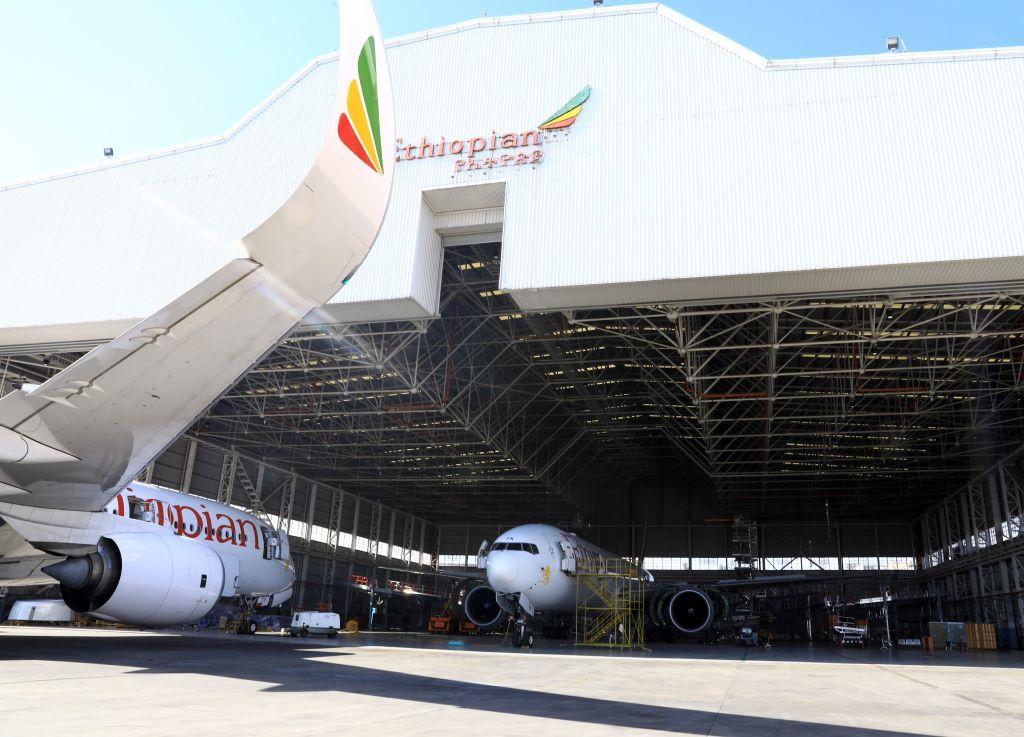
A detailed view of the A350/Boeing 777 hangar.
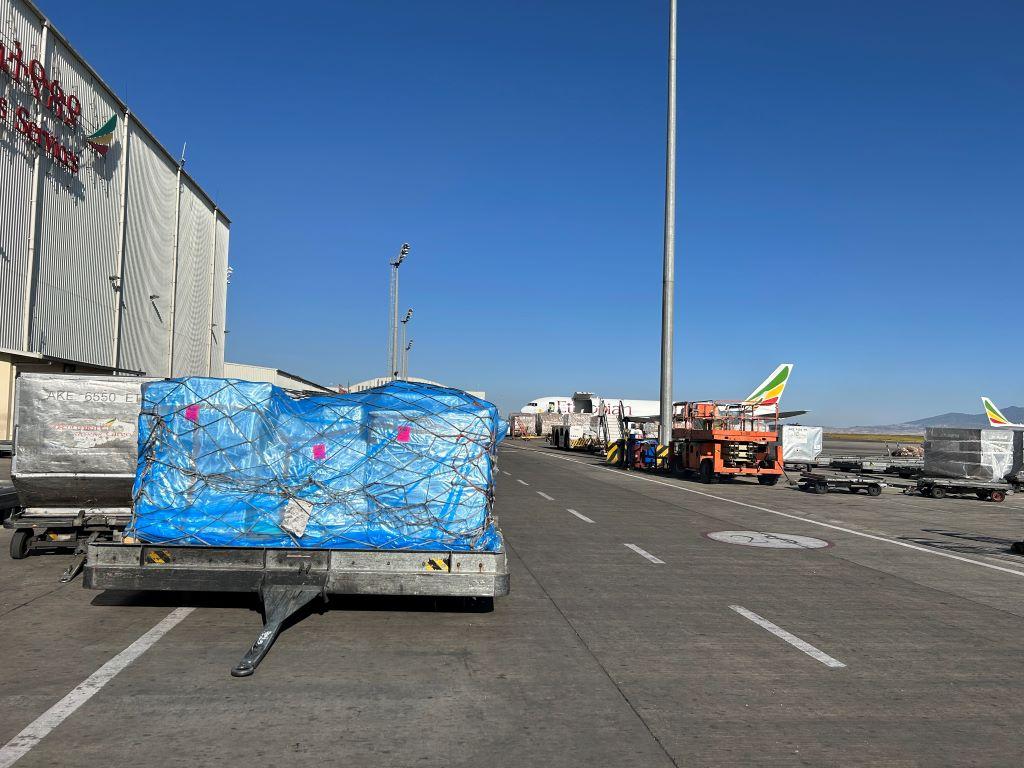
In front of the cargo facility of Ethiopian Airlines, the largest in Africa.
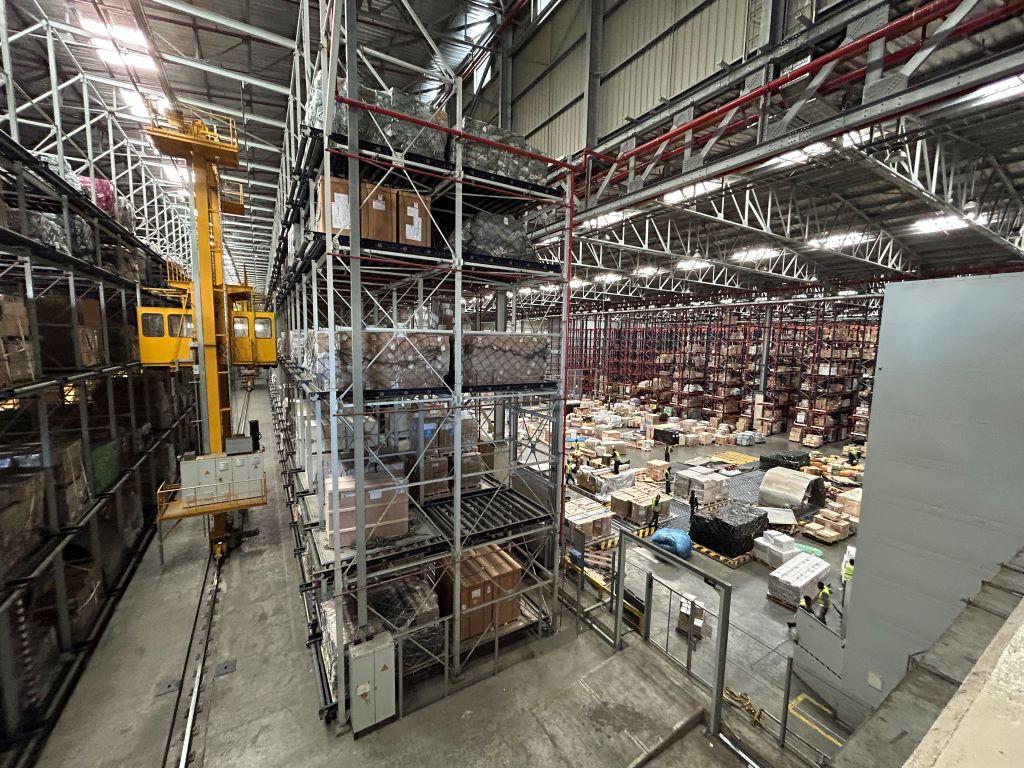
Inside the cargo facility. Around 600,000 tons of all kinds of cargo will be handled here annually. According to the CEO, Ethiopian intends to grow cargo capacity four times by 2035.

Flowers are one of the most prominent goods that will be delivered through Ethiopian‘s Cargo center.

Even though there is a lot of high tech in Ethiopian Airlines‘ Cargo facility, sometimes you have to improvise.
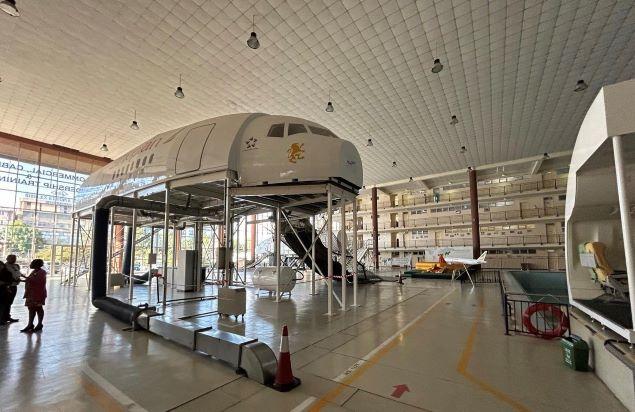
Ethiopian Airlines Aviation Academy accommodates around 4,000 students undergoing pilot training, cabin crew and catering training, aircraft maintenance, commercial and ground services training school, as well as a leadership training school. The picture shows cabin crew training devices.
Ethiopian Airlines is Africa‘s largest airline, operating over 140 aircraft to 131 destinations worldwide. Located at Addis Ababa Bole International Airport, the Star Alliance carrier has huge facilities on site, including MRO, Cargo, Catering and a academy to train people in all areas for the airline.
ATW correspondent Kurt Hofmann recently visited the head office of Ethiopian Airlines as well as the infrastructure, which is necessary to manage a complex airline operation.
